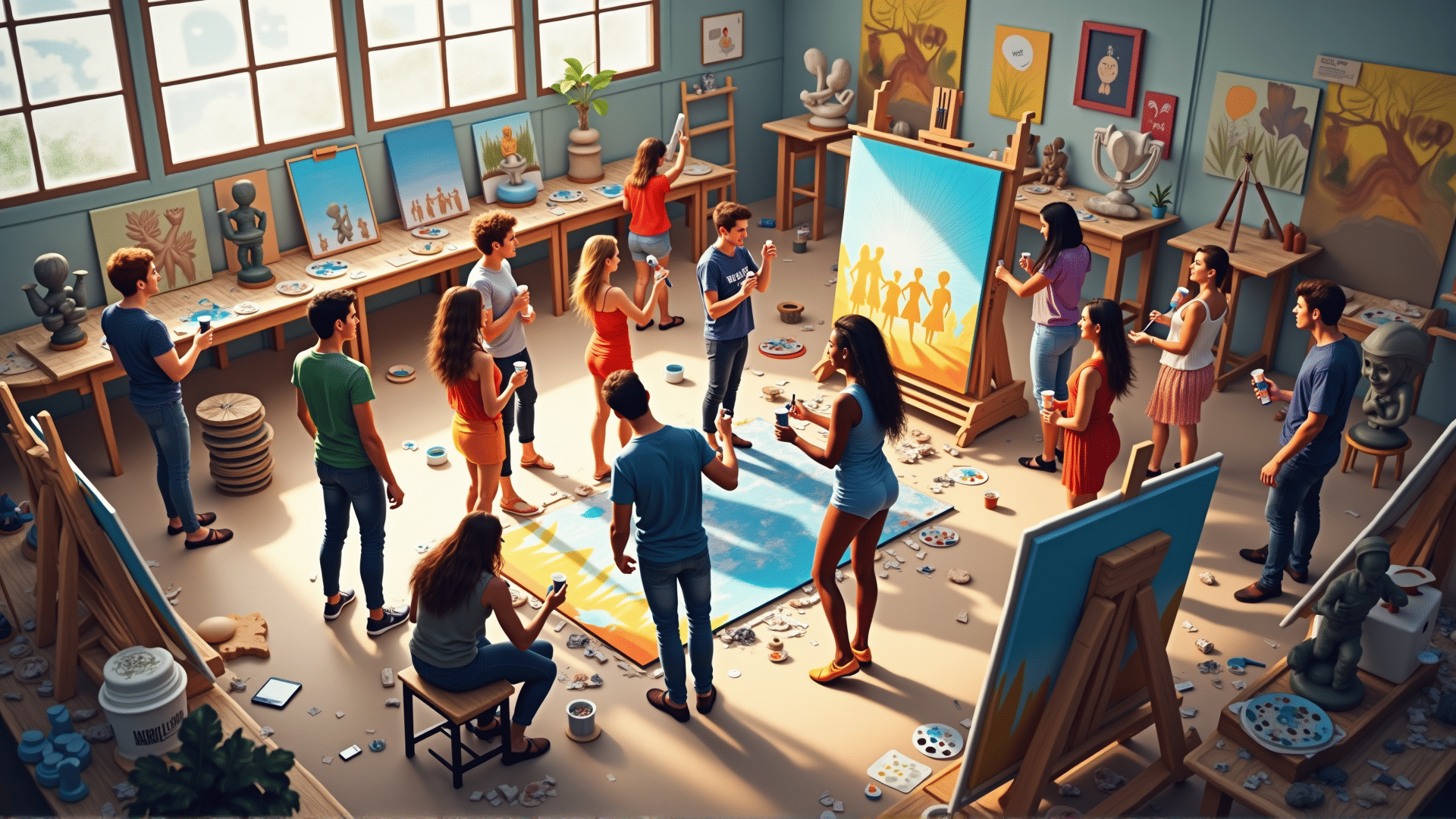In a world increasingly defined by technology and interconnectedness, the boundaries of traditional art are being both challenged and expanded. The power of artistic collaboration has emerged as a vital force in this evolution, bringing together artists, innovators, and creators from various disciplines to create works that transcend traditional forms and techniques.
Artistic collaboration is not a novel concept; however, its significance in the modern era cannot be overstated. The fusion of different talents, perspectives, and mediums allows for the creation of something truly unique. When painters team up with digital technologists, sculptors with sound designers, or photographers with performance artists, the possibilities are limitless, leading to groundbreaking innovations that push the envelope of what art can be.
One of the most inspiring aspects of artistic collaboration is the blending of traditional and contemporary techniques. Consider, for example, a painter working alongside a coder to develop an interactive digital canvas, where striking visuals are accompanied by evolving soundscapes reacting to the viewer’s movements. This not only creates a multi-sensory experience but also elevates the impact of both the visual and auditory components, merging them into a single, immersive experience.
Moreover, these collaborations often provide a platform for cultural exchange and inclusivity, bringing together diverse voices and fostering understanding through shared creative expression. Artists and innovators from different backgrounds can draw on their unique experiences, imbibing their creations with richness and depth. Such collaborations often result in artworks that speak to universal themes, transcending language and cultural barriers and resonating on a human level.
Another fascinating development is the role of technology as a collaborative partner in its own right. With the emergence of artificial intelligence and machine learning, artists are collaborating with machines to co-create. AI algorithms can analyze patterns and generate innovative ideas, which artists then refine and infuse with human emotion and intent. This hybrid creativity blends human ingenuity with computational strength, challenging our understanding of authorship and creativity.
Beyond the aesthetic realms, artistic collaboration holds promise for social impact. Projects that merge art with science and technology can address pressing global issues, such as climate change and social justice, in powerful and engaging ways. Installations that incorporate data visualization, for example, can make complex issues more understandable and compelling to the public, sparking dialogue and encouraging action.
Art institutions and museums are increasingly recognizing the power of collaboration, offering residencies and grants designed specifically to foster cross-disciplinary partnerships. These initiatives not only support the creation of innovative works but also facilitate knowledge exchange and networking among creators from diverse fields.
In conclusion, the spirit of collaboration is breathing new life into the art world, encouraging us to redefine and expand our creative boundaries. By joining hands across disciplines, artists and innovators are creating mesmerizing works that challenge perceptions and expand horizons. Whether it’s through blending different art forms or integrating cutting-edge technology, these collaborations are reshaping the artistic landscape, demonstrating that the whole can indeed be greater than the sum of its parts. As we continue to explore this vibrant frontier, the potential for transformative artistic expression is boundless.
